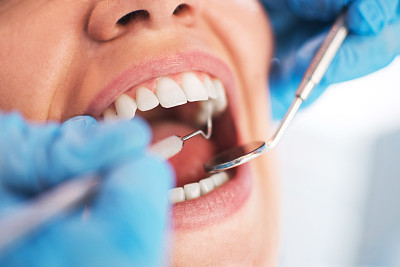The Essential Guide to Understanding the Tooth Extraction Process and Its Aftercare for Optimal Recovery
Summary: Understanding the tooth extraction process is essential for anyone facing this dental procedure. This guide provides an in-depth look at what to expect before, during, and after an extraction, ensuring a seamless experience. First, we explore the reasons behind tooth extractions and how they are diagnosed. Next, we delve into the extraction techniques employed by dentists. We then discuss the aftercare practices necessary for optimal recovery. Finally, we consider warning signs that necessitate a follow-up with a dentist. With this comprehensive information, patients can approach their tooth extraction with confidence and awareness.
1. Reasons for Tooth Extractions Explained

Tooth extractions are typically recommended for various dental issues. The most common reasons include severe tooth decay, gum disease, or overcrowding. In cases where a tooth has been damaged beyond repair due to trauma or infection, extraction becomes necessary to preserve the overall oral health. Understanding the root cause of the extraction can help patients mentally prepare for the procedure.
Another prevalent reason for tooth extraction is to make room for orthodontic treatment. When teeth are overcrowded, dentists may advise extraction to create adequate space for proper alignment. This is especially common in adolescents and young adults undergoing braces treatment. Knowing that the procedure is often aimed at improving dental function may ease patients anxiety.
Lastly, wisdom teeth removal is a routine procedure as they often become impacted. When wisdom teeth do not have sufficient room to emerge or are misaligned, they can lead to infections, pain, and damage to neighboring teeth. Therefore, monitoring these teeth’s eruption is crucial and often necessitates a preemptive extraction.
2. Understanding the Extraction Techniques
Tooth extractions typically follow two main techniques: simple extraction and surgical extraction. A simple extraction is performed on visible teeth that are loosened in the gum. Dentists use special instruments to grasp the tooth, rocking it back and forth until it is released from the socket. This technique is generally quicker and requires less recovery time for patients.
In contrast, surgical extraction is a more complex procedure used for teeth that are not easily accessible, such as impacted teeth. This kind of extraction may require making incisions in the gums or even removing bone tissue. Dentists often prescribe anesthesia for this procedure, ensuring patients remain comfortable throughout the process. Understanding these techniques provides clarity on what to expect during the visit.
Additionally, pre-operative assessments are conducted to ensure patient safety. Dentists evaluate the patients medical history and may perform X-rays before deciding on the extraction method. This level of preparation is crucial for a successful procedure, minimizing complications and enhancing recovery rates.
3. Aftercare Practices for Optimal Recovery
Following a tooth extraction, proper aftercare is essential for healing. Patients are typically advised to bite down on a gauze pad for about 30 to 45 minutes to control bleeding. Afterward, transitioning to soft foods is important to avoid irritating the extraction site. Cold compresses can also help manage swelling during the first few days post-extraction.
Oral hygiene is still critical, even after an extraction. While brushing teeth is encouraged, patients should avoid the extraction site for the first few days. Rinsing with warm salt water can facilitate healing and reduce the risk of infection. Dentists may recommend avoiding using straws, as the suction can disturb the healing clot.
Additionally, one should stay hydrated and take prescribed pain medications as directed. Monitoring for any unusual symptoms, such as persistent pain, fever, or excessive bleeding, is crucial, as these could indicate complications requiring immediate attention. Adhering to these aftercare practices can significantly influence recovery and minimize setbacks.
4. Warning Signs That Require Follow-Up
After tooth extraction, certain warning signs should prompt patients to seek further dental care. The presence of severe and persistent pain may indicate complications, such as dry socket or infection. While some discomfort is expected, explosive pain that worsens over time is concerning.
Additionally, prolonged bleeding beyond 24 hours is another critical sign necessitating a follow-up. This can signal an issue with clot formation or other complications that may require intervention.
Lastly, systemic symptoms like fever or chills may indicate an infection. These signs should alert patients to the need for professional assessment and possible treatment to ensure a full recovery. Recognizing these warning signs early can prevent more complex health issues down the line.
Summary:
In conclusion, understanding the tooth extraction process is a vital part of managing oral health. Recognizing the reasons behind extractions, the techniques used, aftercare practices, and warning signs can empower patients during their recovery journey. Maintaining open communication with your dentist is essential for a successful outcome. Being informed makes transition into post-procedure care smoother and more predictable.
This article is compiled by Vickong Dental and the content is for reference only.


